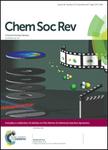版权所有:内蒙古大学图书馆 技术提供:维普资讯• 智图
内蒙古自治区呼和浩特市赛罕区大学西街235号 邮编: 010021

作者机构:Charles Univ Prague Fac Sci Dept Phys & Macromol Chem Prague 12843 2 Czech Republic ITMO Univ TheoMAT Grp Lomonosova 9 St Petersburg 191002 Russia Delft Univ Technol Dept Chem Engn Fac Appl Sci Inorgan Syst Engn Grp Van der Maasweg 9 NL-2629 HZ Delft Netherlands
出 版 物:《CHEMICAL SOCIETY REVIEWS》 (化学学会评论)
年 卷 期:2018年第47卷第22期
页 面:8307-8348页
核心收录:
基 金:European Research Council (ERC) under the European Union Government of the Russian Federation [08-08] Ministry of Education and Science of Russian Federation [11.1706.2017/4.6] Royal Thai Government Scholarship Charles University Centre of Advanced Materials (CUCAM) (OP VVV Excellent Research Teams) [CZ.02.1.01/0.0/0.0/15_003/0000417] Czech Science Foundation [17-01440S, P106/12/G015]
主 题:Computational modeling temperature effects Chpher(0) Computer hardware Heterogeneous catalysis Active Site Reaction Mechanisms ULTRAHIGH VACUUM Molecular Dynamics potential energy surfaces
摘 要:An increased synergy between experimental and theoretical investigations in heterogeneous catalysis has become apparent during the last decade. Experimental work has extended from ultra-high vacuum and low temperature towards operando conditions. These developments have motivated the computational community to move from standard descriptive computational models, based on inspection of the potential energy surface at 0 K and low reactant concentrations (0 K/UHV model), to more realistic conditions. The transition from 0 K/UHV to operando models has been backed by significant developments in computer hardware and software over the past few decades. New methodological developments, designed to overcome part of the gap between 0 K/UHV and operando conditions, include (i) global optimization techniques, (ii) ab initio constrained thermodynamics, (iii) biased molecular dynamics, (iv) microkinetic models of reaction networks and (v) machine learning approaches. The importance of the transition is highlighted by discussing how the molecular level picture of catalytic sites and the associated reaction mechanisms changes when the chemical environment, pressure and temperature effects are correctly accounted for in molecular simulations. It is the purpose of this review to discuss each method on an equal footing, and to draw connections between methods, particularly where they may be applied in combination.